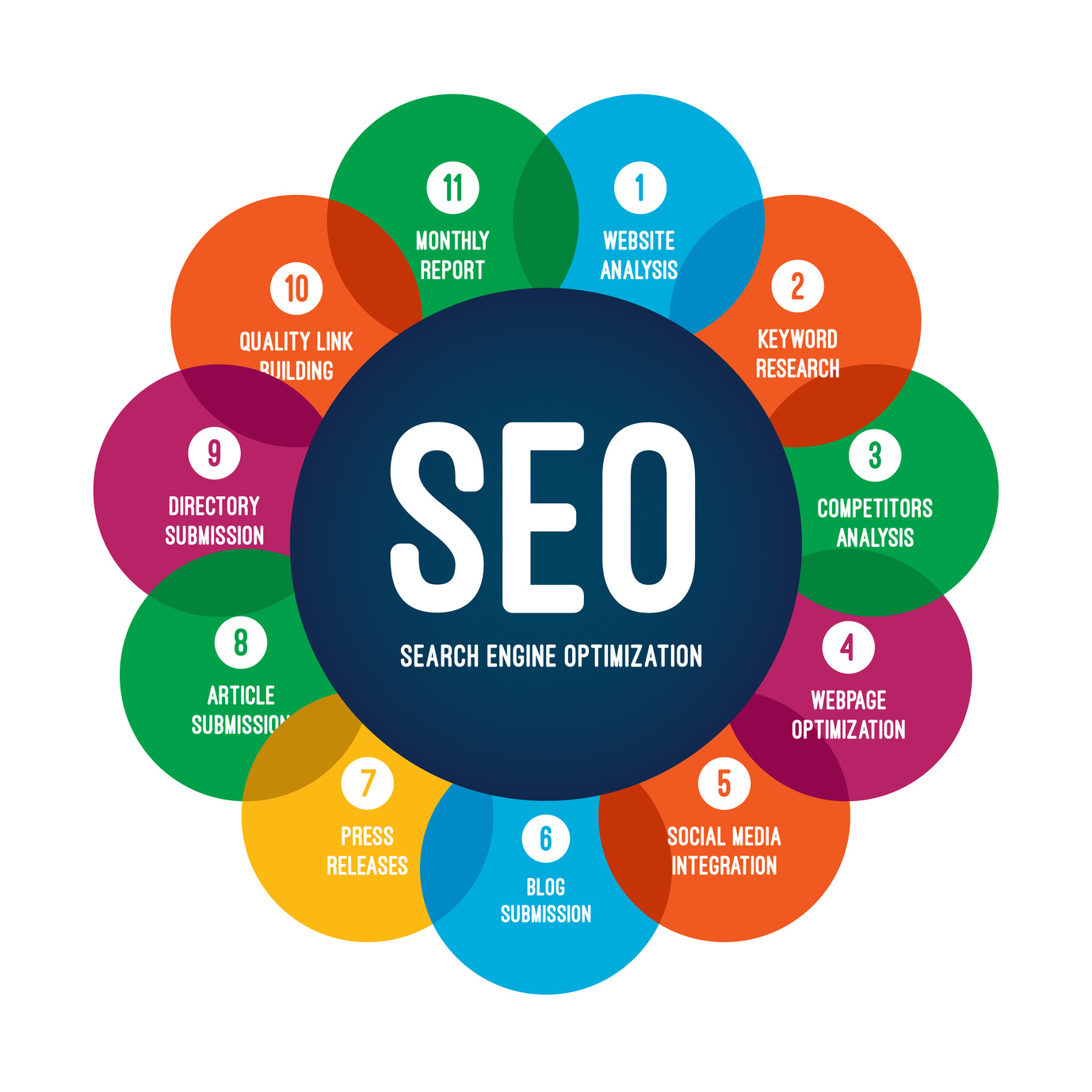
If you’ve ever dreamed of turning your blog into a full-time income source, you’re not alone. Many bloggers start with a passion for writing, only to realize that without proper strategy, their content may never reach its full potential. The good news is that with the right approach—especially in the realm of Search Engine Optimization (SEO)—you can transform your blog into a thriving business.
SEO isn’t just about ranking higher on Google; it’s about creating value, building trust, and ensuring your content reaches the right audience. Whether you’re just starting out or looking to grow your existing blog, understanding the basics of SEO is essential. In this article, we’ll walk you through the first steps to turn your blog into a business, focusing on how to implement SEO effectively.
What Is SEO and Why It Matters
At its core, SEO stands for Search Engine Optimization. It’s the practice of improving your website so it appears higher in search engine results pages (SERPs) for relevant keywords. The goal is to make your content more visible to people who are actively searching for what you offer.
Why does this matter? Because search engines like Google are the primary way people find information online. If your blog doesn’t show up when someone searches for something related to your niche, you’re missing out on valuable traffic—and potential customers.
SEO is especially important for bloggers because it helps you:
- Attract organic (free) traffic
- Build credibility and authority
- Increase brand visibility
- Convert visitors into loyal readers or customers
In 2025, SEO continues to evolve, but the fundamentals remain the same: create high-quality content, optimize it for search, and ensure it’s easy to find and use.
How SEO Impacts SEO Performance
SEO directly affects your blog’s performance in several key areas:
1. Traffic
By optimizing your content for the right keywords, you increase the chances of appearing in search results. This leads to more visitors coming to your site naturally.
2. Engagement
Well-optimized content is often more relevant and easier to read, which keeps readers on your site longer and encourages them to interact with your posts.
3. Conversion
When your blog ranks well for targeted keywords, it becomes a powerful tool for generating leads, selling products, or promoting services.
4. Brand Authority
Consistently publishing high-quality, SEO-optimized content helps establish you as an expert in your niche. This builds trust and encourages repeat visits.
SEO also works hand-in-hand with other strategies like content marketing, email newsletters, and social media. A strong SEO foundation makes these efforts more effective.
Step-by-Step Implementation Framework
Turning your blog into a business starts with a solid SEO strategy. Here’s a step-by-step guide to help you get started:
1. Define Your Audience and Niche
Before you dive into SEO, you need to know who you’re writing for. Identify your target audience by analyzing demographics, interests, and pain points. Use tools like Google Analytics or Facebook Insights to gather data.
Once you understand your audience, focus on a specific niche. For example, if you’re a lifestyle blogger, narrow it down to topics like self-improvement, beauty, or travel. This helps you create content that resonates with your readers and improves your chances of ranking for relevant keywords.
2. Conduct Keyword Research
Keyword research is the foundation of SEO. Use free tools like Google Keyword Planner, Ubersuggest, or AnswerThePublic to find keywords that your audience is searching for.
Look for keywords that have:
- Moderate to high search volume
- Low competition
- Relevance to your niche
For example, instead of targeting “blogging,” consider more specific terms like “how to start a blog in 2025” or “best blogging platforms for beginners.”
3. Optimize Your Content
Once you have your keywords, it’s time to write content that includes them naturally. Use your keywords in:
- Title
- First paragraph
- Subheadings
- Meta description
- Alt text for images
Tools like Yoast SEO can help you analyze your content for keyword usage, readability, and optimization. Aim for a readability score of 80+ and ensure your content is easy to scan and understand.
4. Improve Site Structure and Navigation
A well-organized site helps both users and search engines. Make sure your blog has:
- Clear categories and tags
- Internal linking between related posts
- A logical flow from one page to another
Use tools like Google Search Console to monitor crawl errors and fix broken links. A fast-loading, mobile-friendly site also improves user experience and SEO performance.
5. Build Backlinks
Backlinks are one of the most important ranking factors. They signal to search engines that other websites trust your content. To build backlinks:
- Guest post on reputable blogs
- Participate in online communities
- Share your content on social media
- Create shareable resources like guides or infographics
Avoid spammy tactics like buying backlinks. Focus on quality over quantity.
Real or Hypothetical Case Study
Let’s look at a hypothetical case study of a food blog called “QuickBites”. The blog started with a small following but struggled to gain traction. After implementing SEO best practices, here’s what happened:
- Keyword research helped them identify high-potential keywords like “easy dinner recipes” and “quick weeknight meals.”
- Content optimization improved their rankings for these keywords.
- Internal linking made it easier for users to navigate the site.
- Backlink building increased their domain authority.
Within six months, their organic traffic grew by 150%, and they began monetizing their blog through affiliate marketing and sponsored content.
Tools and Techniques for SEO
Here are some of the most useful tools for beginners:
- Yoast SEO – A WordPress plugin that helps you optimize content for keywords and readability.
- Google Keyword Planner – A free tool for finding relevant keywords.
- Ubersuggest – Offers keyword suggestions, competitor analysis, and SEO audits.
- Google Analytics – Tracks traffic, user behavior, and conversion rates.
- Screaming Frog – A tool for crawling your site and identifying technical SEO issues.
These tools can help you track progress, identify opportunities, and refine your strategy over time.
Future Trends and AI Implications
As AI continues to shape the digital landscape, SEO will become even more focused on user intent and content quality. Search engines like Google are getting better at understanding context, meaning that high-quality, original content will be more important than ever.
Additionally, voice search and multimodal search (combining text, images, and video) are on the rise. This means optimizing for conversational keywords and structured data will become increasingly important.
To stay ahead, focus on:
- Creating valuable, actionable content
- Using structured data to enhance rich snippets
- Optimizing for mobile and voice search
- Continuously analyzing and adapting your strategy based on data
Key Takeaways
- Start with clear goals: Define your audience, niche, and content strategy.
- Do keyword research: Find the right keywords that your audience is searching for.
- Optimize your content: Use keywords naturally, improve readability, and structure your content for easy navigation.
- Build backlinks: Focus on quality over quantity to boost your authority.
- Monitor and adapt: Use tools like Google Analytics to track your progress and refine your strategy.
SEO is not a one-time task—it’s an ongoing process. But with the right approach, you can turn your blog into a sustainable business.
Meta Title: How to Turn Your Blog into a Business: Essential SEO Steps for Beginners
Meta Description: Learn the first steps to turn your blog into a business with SEO. Discover how to optimize your content, attract traffic, and grow your online presence.
SEO Tags (5): SEO Tips, Blog Monetization, Content Optimization, Keyword Research, Website Traffic
Internal Link Suggestions:
– [Parameter #1: Keyword Research]
– [Parameter #3: Content Quality]
– [Parameter #5: User Experience]
External Source Suggestions:
– https://support.google.com/webmasters
– https://yoast.com/seo-plugin-wordpress/
– https://www.semrush.com/








